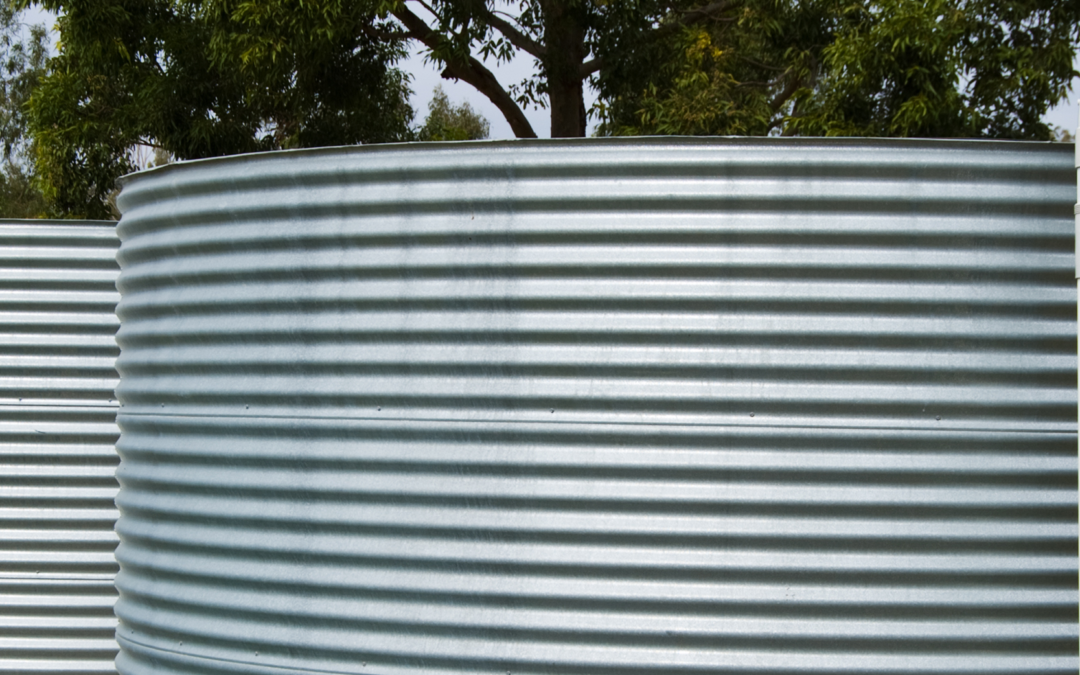There are many different water storage and rainwater tank options available on the market.
This is good news for consumers, as it makes it easier to select the ideal rainwater tank for your property, situation and needs.
When planning the installation of a rainwater tank or tanks, it’s important to consider costs, where the tank will be located, whether it will be aboveground or belowground, the ground surface preparation required, your size requirements, any space restrictions, how easy the tank material is to repair and whether a manufacturer guarantee is available.
Above ground vs below ground
Rainwater tanks and other water storage vessels can be located above ground or below ground (or partially below ground).
Choosing between the two will largely depend on available space (below ground tanks located under driveways are a favourite space-saving option), aesthetic preferences (below ground tanks are almost “invisible”), budget (above ground tanks are cheaper to install) and maintenance preferences (above ground tanks are easier to inspect).
Once you’ve made this decision, however, you still need to choose your tank type and materials.
Concrete Tanks
Concrete rainwater tanks can be installed above ground or below ground. They’re a particularly ideal choice for below ground tanks as their strength and load-bearing tank lids allow them to be installed under garages or driveways.
Concrete tanks are also suited to properties that need to store large quantities of rainwater, as they can be built in particularly large configurations.
Metal/Steel Tanks
Modern galvanised tanks with polyethylene linings to prevent corrosion and protect water quality are another popular rainwater tank option.
Strong and durable, they come in a range of sizes. Modular metal tanks can be built to store large quantities of rainwater, while slimline metal tanks provide a space-saving solution for smaller properties. Many of
them are also available in a range of colours so you can select the right one to complement your property.
Plastic/Polyethylene Tanks
Lightweight and easy to install, plastic rainwater tanks made from polyethylene are an increasingly popular choice for household use.
Available in a range of colours, shapes and sizes, there are also reinforced options available for below ground installation. Their cost and versatility explain why polyethylene tanks are becoming a more common sight.
Fibreglass Tanks
Corrosion-resistant, sturdy, and manufactured with a food-grade internal coating to protect your water quality, fibreglass tanks are a relatively expensive but long-lasing water storage option.
Plastic/Polyethylene Tanks
Lightweight and easy to install, plastic rainwater tanks made from polyethylene are an increasingly popular choice for household use.
Available in a range of colours, shapes and sizes, there are also reinforced options available for below ground installation. Their cost and versatility explain why polyethylene tanks are becoming a more common sight.
Bladders
Bladders are an innovative, space-saving water storage option that can be installed in relatively cramped spaces under your home or deck. Made from flexible, puncture-resisant materials, these sack-like water storage vessels are particularly suited to urban areas.
The right tank for you
The rainwater tank or water storage vessel you choose for your property will form a central part of your Rain Harvesting system. After all, the ultimate purpose of the filters, covers, diverters and other rain harvesting equipment featured in your Rain Harvesting system is to protect the quality and quantity of the rainwater that ends up in your tank. So it pays to choose the right one.

